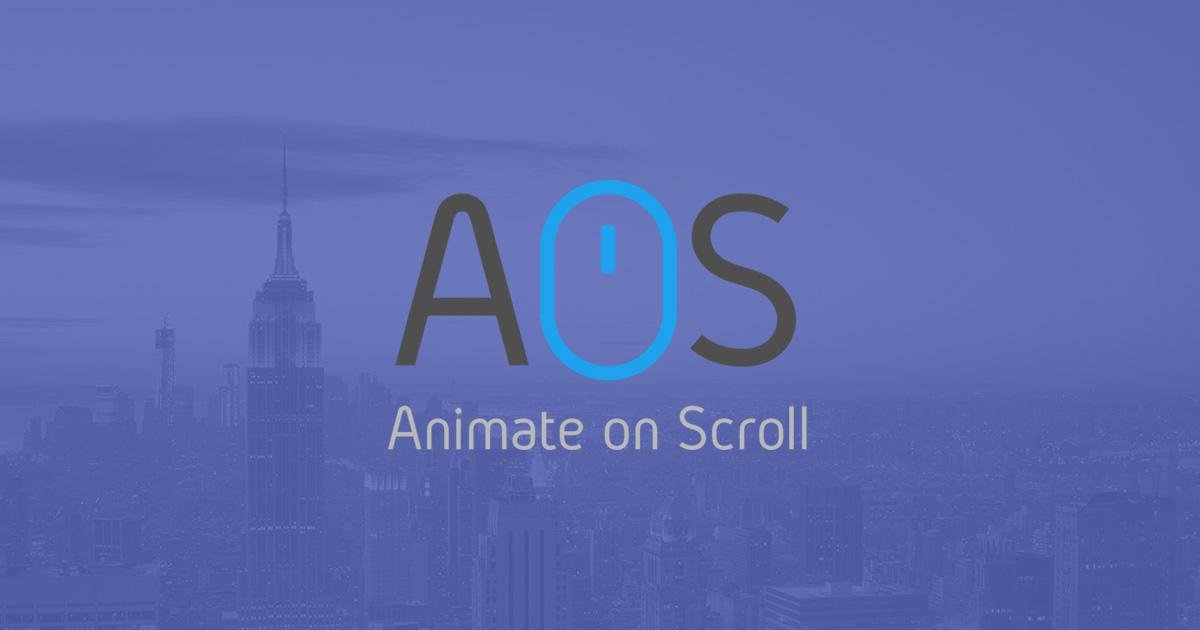This paper is based on the year 2024 when the concept of Motion UI use is considered to be mandatory to produce appealing, impressive, and user-friendly designs. With the passage of time and constant changes in the means of digital interfaces, the use of motion design elements can be deemed as an inevitable norm rather than a mere custom within the limits of UI/UX design. Motion UI introduces lifelikeness into a previously static page layout, helping to navigate applications, providing transitions and all manner of interactively appealing elements for increasing the perceived usability. This year, the focus is shifted towards using state of the art methodologies and technologies to create smooth and interactive motion headers that can quickly and properly react to various inputs from the clients.
When it comes to Motion UI in 2024 the use of this design approach is characterized by its’ increased refinement and utility. A lot of designers are incorporating full-bodied frameworks and libraries to perform highly technical animation solutions which serve a function while being enigmatic at the same time. While micro-interactions that feedback and inform users or next actions and elaborate animations that narrate or explain, are processes motion UI is of great significance in making interactions more natural in the digital world and enjoyable. With the years progressing deeper into the realm of digital media and technology, understanding and implementing the concept of motion UI is not only a way to distinguish oneself as a unique designer and meets the challenge of the future but also to enhance the overall user experience and attention to websites and applications, in turn bringing more sales and client satisfaction to businesses.
What is Motion UI?

This is a design concept that organizes interactions around dynamics such as animation and transition, to achieve enhanced user interface. Basically, it surpasses the creation of simple animations and graphics in forms of icons, buttons, and indicators that help in navigation and feedback as well as the general interaction with applications. With Motion UI, users can use animated transitions, micro-interactions, and smooth scrolling effects to make changes, let clients know that actions are in progress, and make the use experience more engaging and pleasant.
By 2024, Motion UI is appreciated not only as a work of art that enlivens interfaces, but as something that has enabled forms to be better at what they were intended to do. It especially assists in enhancing the users’ interactions experiences since it is very helpful in closing the gap between real human interactions and computer interactions. There are complex systems like Framer Motion or Lottie where one can easily produce highly complex animations. This is where the proper application of Motion UI plays an important role in creating the qualitative differentiation from the competitor’s products from the point of view of further adaptation of given solutions by users.
Uses of Motion UI?
In different aspects, Motion UI has been employed as a tool to provide improvements in the usability of digital interfaces. The first important scenario of using transitions is in forming smooth transition between states of the application that can be helpful for users in perceiving changes and minimizing the amount of their cognitive work. For instance, animated entrance and exits to the pages and menus can direct the user’s attention as well as in giving an orientation of the presence of space in the application.

A second area involves the usage of Motion UI in micro-interactions: These are tiny animated actions that aim to create a positive experience for users. Some of them are button Active States which help in an animation to show that it has been clicked, loading indicators such as spinners, and error messages which vibrate to be noticed. But even if all the motion graphics seem like fun and gaming elements, in Motion UI, they are equally effective in storytelling within an app, animations to explain processes or to display data which can be better explained in a visible form.
In general, Motion UI is beneficial because it adds to the responsiveness of the interfaces, shortens the amount of time users need to spend with any interface to feel comfortable and efficient, and adds a layer of professionalism to the digital products being developed.
Top Motion UI Frameworks and libraries in 2024
1. Framer Motion

Ease of Use: Sprightly API for regular React apps.
Flexibility: Supports and capable of accommodating complicated animations and gestures.
Performance: Especially optimized for perfect, fluid animations if implemented properly.
Integration: Unlike most other libraries, it complements well with other React libraries and components.
2. Lottie
Vector-Based: Reduces rendering to rely on well-formatted JSON files for animations of high quality.
Cross-Platform: Not explicitly: However, the worksite even across devices such as web, iOS, and Android.
Animation Export: It enables creations of animations in Adobe After Effects and permit their exportation.
Community Support: First, Extensive user community and numerous plugins available throughout the internet.
3. Anime. js
Lightweight: Tiny but mighty: A look at examples of how these bots are affecting consumers.
Versatile: It supports aspects such as CSS, SVG, DOMs, and JavaScript object animations.
Timeline Control: Features about the timeline that are useful when timelines have many branches and segments.
Ease of Use: For fast integration with cell software, a straightforward API is available.
4. GSAP (GreenSock Animation Platform)
Performance: These ones are cherished for their operational performance and the smooth ride that they offer.
Robustness: Managing multi-layered animations are the ability.
Plugins: Reasons that exceed or go beyond the conventional functionality of P2P software:
Cross-Browser Compatibility: Helps maintain uniformity in the behavior of the browser in the various operating environments.
5. Three. js
3D Animations: Currently focuses on WebGL and provides 3D animation.
Real-Time Rendering: Well suited for real time 3D rendering abilities.
Extensive Documentation: Complicated contents and sets of courses.
Wide Adoption: Used in generating realistic 3D website environments.
6. Motion UI by ZURB

Predefined Animations: Provides links to a list of animations the user can implement without customization.
Customizability: For instance, pretty easy to customize with Sassy CSS which is a scripting language of CSS.
Flexibility: Comprehensive compatibility of various front-end frameworks.
Documentation: With proper and accurate documentation for easier management during implementation.
7. Velocity. js
Speed: As per its utilization, it gives improved high performance outcome.
Backward Compatibility: Arolls provide support for old browsers but has multiple features of new browsers.
Ease of Use: Well-understood interfaces to simplify the incorporation process.
Flexibility: It is able to animate a variety of properties such as color and scroll.
8. PixiJS
2D Animations: Ideal for crisp and clear high-velocity 2D animation sequences.
WebGL Rendering: These applications use WebGL for sporty rendering of different models.
Interactive Graphics: Can support highly animated interfaces of animation varieties.
Extensibility: Easy to use, flexible and customizable software architecture with plugins and extensions.
9. AOS (Animate On Scroll)

Scroll Animations: Specifically caters to animations which are usually activated by scroll events.
Ease of Use: It is relatively easy to use with very little specific settings to be made as compared to most other options.
Customization: Provides control over how the animation appears on the webpage and the duration of its appearance.
Lightweight: There is a small library size for quick loading and to avoid memory and disk space over use by applications.
10. Popmotion
Functional API: Employ an industrial approach when it comes to producing animations.
Flexibility: It supports both the rigid body physics driven animation as well as key frame animations.
Modularity: A modular architecture that firewalls and selectively imports desired state into the system.
Ease of Integration: It is specially designed to be integrated with other JavaScript frameworks such as React.
Benefits of Motion UI in Web Development
1. Enhanced User Experience
Engagement and Intuitiveness: Is engaging to the user and offers clues as to where to look when in use as well as how to perform certain interactions making the process of navigation through various actions more fluid and fun.
2. Improved Usability
Guidance and Feedback: Immediacy is one of the most significant aspects of micro-interactions: it efficiently and organically guides users through the processes and interfaces and highlights essential elements for instant retrieval and action.

3. Increased User Engagement
Visual Appeal and Interactivity: Develops an attractive modern look and feel for the site with active and high pilot region interactivity that holds the users’ attention and leads to their extended presence on the site.
4. Brand Differentiation
Uniqueness and Consistency: Logo animations can differentiate a brand from a competitor in terms of brand identity, across the internet, mobile and more, and make one’s brand more friendly.
5. Conversion Optimization
Call to Action and Guidance: Animated call-to-action buttons and visual cues enhance the possibilities of click-through rates and subsequent navigation, outstanding conversion steps, and consequently, sales or encourages.
Future of Motion UI?

It is crucial to realize that the developments going to occur in the future of Motion UI are going to be massive, driven by emerging technologies and leading to higher user expectations. Looking into the future in 2024 and beyond there are predictions that Motion UI will be even more connected with artificial intelligence (AI) and machine learning to offer even more stunning and highly personalized as well as adaptive animation systems that will have the ability to adapt to users’ unique behavior. This is especially the case due to the influence of the so-called ‘third wave’ interfaces such as augmented reality (AR) and virtual reality (VR) that will further extend the possibilities of Motion UI, the interactions becoming more diverse and realistic. Moreover, with the help of new web standards, adaptive technologies will be gradually enhanced and the complexity of animations will increase alongside with performance > McConnell (2004). Challenges and opportunities related to access will arise, making sure that motion design improves accessibility to its targeted designs to all users especially including the ones that suffer from motion sickness. With time, designers will have more use of highly developed paradigms to design fluid, natural, and context-sensitive animations, which would make animation an essential part of designing a fluid interface for every application using Motion UI.
Adlivetech website design services create a perfect blend of design aspects for its clients to design a masterpiece that can convey a brand message and curve a strong digital presence of the business.
DM us for any query and quick help.
Email: info@adlivetech.com
Whatsapp: Link
